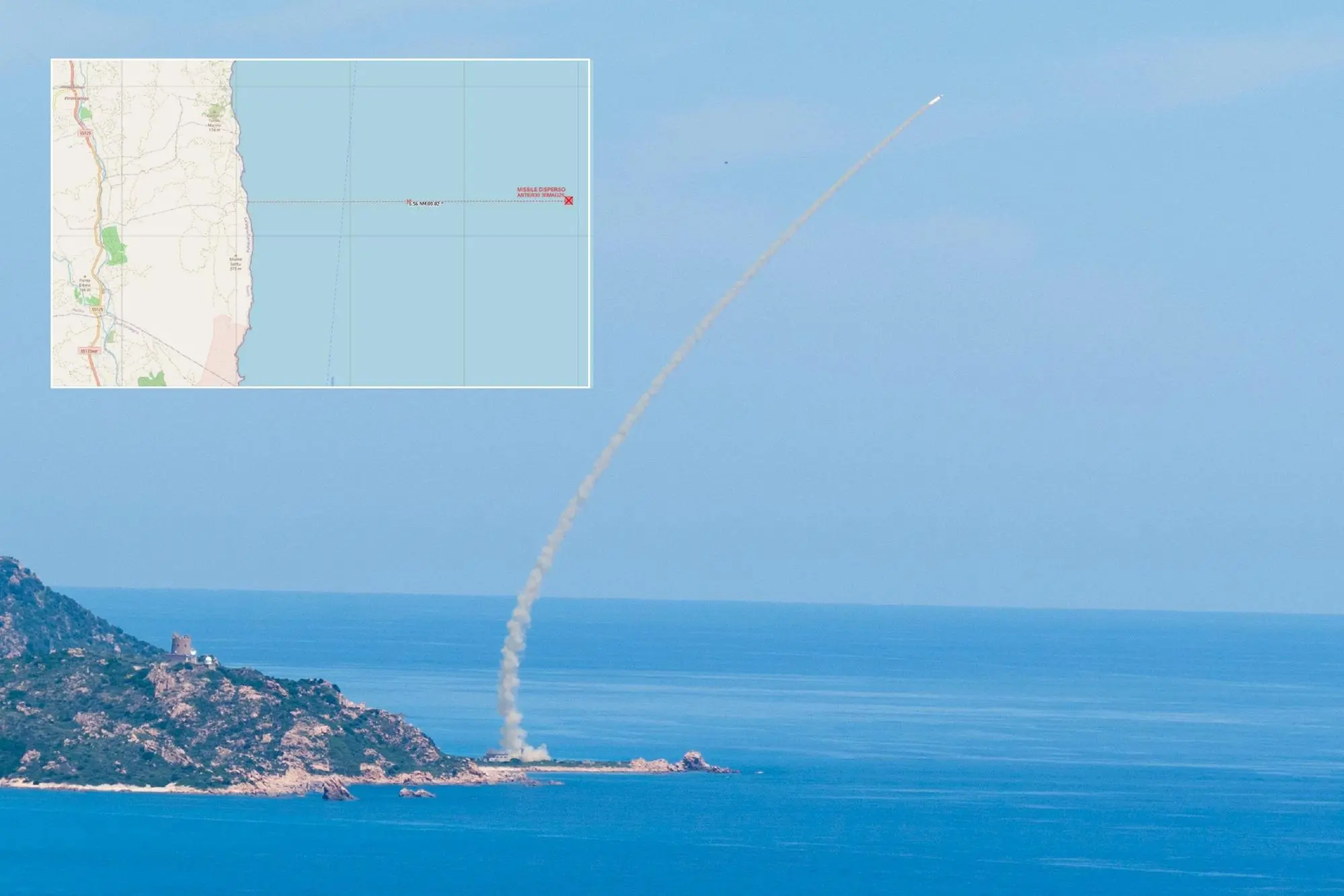A two million euro missile lost off the coast of the Quirra Polygon
Coast Guard order: the Aster 30, still loaded, had been tested during exercises for a response to a foreign attack. It is part of the European rearmament programPer restare aggiornato entra nel nostro canale Whatsapp
It is white, it is about 4.2 meters long, it has a diameter of just under 20 centimeters. It can explode. And its cost, according to a report by the Institut français des relations internationales, is about 2 million euros.
These are the characteristics of the Aster 30 missile which is “missing” off the coast of the Salto di Quirra joint testing range, at a depth of approximately 602 metres.
The warning comes from the Arbatax maritime district office, which issued a danger warning and ordered not to approach a distance less than 150 meters from the point of the presumed fall. No risk for swimmers, given the distance from the shore. But certainly a state of affairs that represents a reality a little different from that which emerged from the official press releases of the armed forces, which at the end of May had reported on the exercises that had just taken place in the shooting range.
The communication
More than computer simulations: in the inter-force shooting range of Salto di Quirra, an inaccessible stretch of the eastern coast of Sardinia, in recent weeks the Italian defense system was tested by fire to "verify the procedures for the surveillance of airspace against modern threats of the third dimension". Two Aster 30 missiles were fired using the Samp-T system, to try to neutralize the threat of Mirach-40 radio targets, i.e. remotely piloted aircraft that simulate a wide range of air attacks. But Stinger surface-to-air missiles were also used to cancel the dangers caused by other air targets. During the activity, anti-drone systems (C-Uas) were also tested "integrated in the air defense system".
War in Quirra
The information is provided by a press release from the Army General Staff, which underlines: «The “launch campaign” followed the “Joint Stars 2025”, an exercise that involved anti-aircraft batteries, developed in several sessions, reproducing simulated attacks of varying intensity with the aim of countering air and missile threats, to guarantee the protection of the landing area of the Allied Forces». In short: from the creation of an IT environment in which a Russian attack was hypothesized that, according to the news, would have breached the national defenses causing six missiles to end up on Cagliari, we moved on to real tests, those where the weapons really fire.
The military source communication speaks of a perfectly successful operation, so much so that the joint operational commander (Covi), General Giovanni Maria Iannucci «expressed words of appreciation for the work carried out by the anti-aircraft gunners» deployed on the field in Sarrabus, in “classified” connection with the higher command deployed in Sabaudia. But is the system really that efficient?
The Wall Street Journal
The Samp-T may not be working properly, according to a recent report by the Wall Street Journal. Its price tag is around 500 million euros, it fires missiles (the Aster) worth two million each. And it was delivered from Europe to Ukraine to counter Russian attacks. According to the conservative American newspaper, the war product of the Italian-French Eurosam deployed on the Kiev defense front is equipped with software that has difficulty intercepting Russian hypersonic missiles. The cause: an unspecified technical problem. The supplier company has not responded to questions posed by American journalists, so its version cannot be known.
The Sardinian tests
The tests carried out in Sardinia, and the disclosure of their results, seem to tell a different story of effectiveness. And European governments seem to believe this version. Italy, France and the United Kingdom – as part of the European rearmament campaign – aim to jointly purchase 200 Aster missiles. The ones tested in Quirra. One, however, is lost. And it lies at the bottom of the sea.
Enrico Fresu
